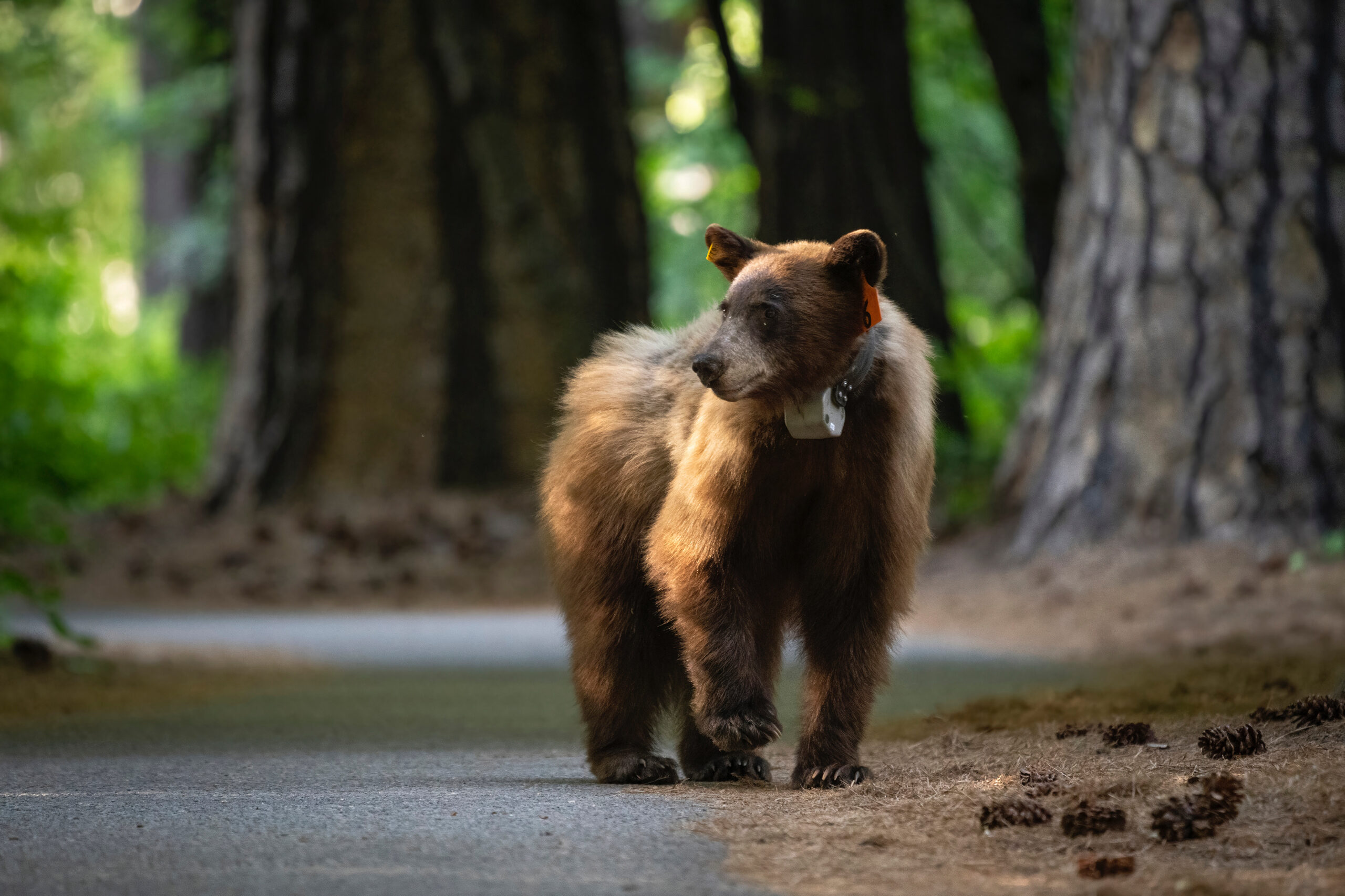
(Photo: J. Hadley)
Bears are up and moving in Yosemite National Park! They have been spotted moving around from the Sierra Nevada foothills to Tuolumne Meadows in the high Sierra. Bears typically emerge from hibernation in March or April in Yosemite depending on food availability, elevation, and weather. Adult male bears awaken first, followed by solo females and juveniles, and finally sows with cubs. In mid-May, the first spring cubs were spotted in the park on the Yosemite Falls Trail.
The newly awakened bears are hungry! Bears in Yosemite Valley eat new grasses, flower buds, and fresh roots in the early spring along with leftover natural food (especially black oak acorns this year) from the previous fall. Bears also use meadows and vernal pools to consume new sedges high in sugar. As spring progressed, bears were observed tearing into decaying logs looking for insects and nests. In June, bears began eating fruit including white stemmed raspberries and non-native apples. Despite the fresh growth available as food, Yosemite bears can continue to lose weight into May while their metabolisms recover from hibernation.
Besides working on regaining weight lost in hibernation, multiple male bears were observed following female bears around starting in early May. This seems early as the courtship of sows by boars (mating season) usually does not begin in the Sierra until early June. Sows will aggressively chase off their yearlings this time of year before coming into estrus and mating. The only female bear seen with a yearling in Yosemite Valley was last observed together prior to separating in the first week of May. While black bears mate in late spring or early summer, the fertilized egg does not implant until fall to make sure the female’s body condition can support a pregnancy to term.
How can you help protect these bears this summer? The same things we need to do every day to keep bears alive and wild! Store food and trash (anything with a scent or calories) within arm’s reach of an awake person or secured in a building, bear canister, or food locker. Stay a minimum of 50 yards away from bears and further if your presence is changing their behavior.
